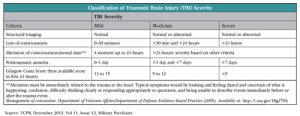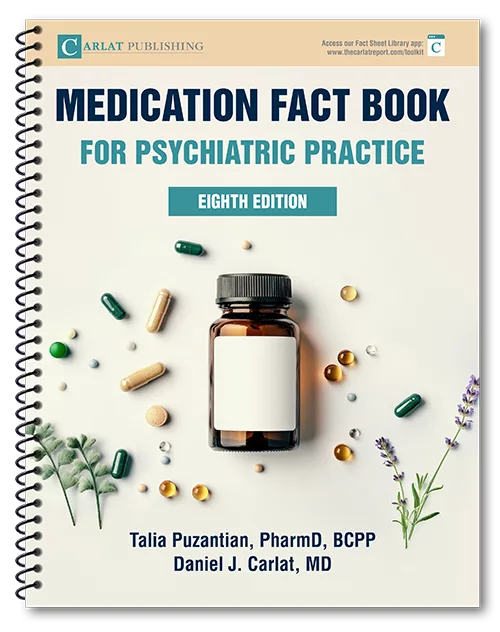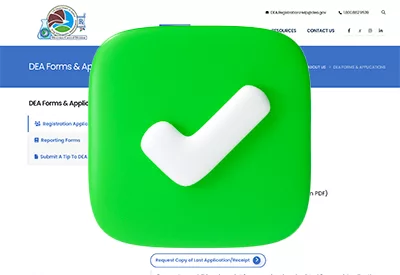Home » Traumatic Brain Injury in Psychiatric Practice
Traumatic Brain Injury in Psychiatric Practice
December 1, 2013
From The Carlat Psychiatry Report
Lisa A. Brenner, PhD
University of Colorado, Anschutz Medical Campus, Departments of Psychiatry, Physical Medicine and Rehabilitation, and Neurology
Dr. Brenner has disclosed that she has no relevant financial or other interests in any commercial companies pertaining to this educational activity.
A casual glance at front-page headlines and scientific publications has probably raised your awareness of traumatic brain injury (TBI) and the TBI-related symptoms that might bring a patient to your office. In the popular press, reports often focus on injuries from combat and sports—such as those resulting from improvised explosive devices (IEDs) or hard hits in football—and their disabling results.
Despite the increased attention drawn to TBI, I often hear statements from mental health providers like, “I don’t see anybody in my clinic who has a history of TBI,” or, “People with more severe injuries don’t seek mental health services.”
It’s also common for practitioners to believe that patients with a history of severe TBI don’t live independently, and as such, are unlikely to seek care outside of inpatient institutions or nursing homes.
Recent findings suggest that this is not the case. In fact, almost half of those seeking mental health services at a Veterans Health Affairs (VHA) mental health clinic had a history of TBI (Brenner LA et al, J Head Trauma Rehabil 2013;28(1):21–30). Moreover, about a third of participants who completed a structured clinical interview regarding lifetime history of TBI reported a history of moderate to severe injury.
Press reports also frequently highlight outcomes such as suicide, and sometimes imply causal links between a history of TBI and catastrophic behaviors like homicide. These outcomes are, fortunately, quite rare, but they can overshadow the more common presentations associated with a history of TBI. In this article I’ll discuss (1) how to assess for a history of TBI; (2) how to evaluate a patient’s chief complaint in the light of post-acute TBI symptoms, with the aim of determining if the TBI is contributing; and (3) strategies for interventions.
What is a Traumatic Brain Injury?
Each year in the United States, more than 1.7 million individuals with TBI are seen in emergency departments, are hospitalized, or die (Faul M et al, Traumatic brain injury in the United States: emergency department visits, hospitalizations, and deaths. Atlanta: Centers for Disease Control and Prevention, National Center for Injury Prevention and Control; 2010. http://1.usa.gov/1clnsef). This does not include the large number of people who receive treatment in other health care settings, or those who do not seek treatment.
A TBI is a historical event: an injury that has already happened. Diagnostically, it entails having experienced an event (eg, fight, fall, hit, blast, motor vehicle accident) that resulted in a structural injury to the brain or a physiological disruption of brain function, such as an alteration of consciousness (AOC) or loss of consciousness (LOC). Severity of injury (mild, moderate, severe) is classified according to the extent of injury to the brain and the degree of altered consciousness after injury, NOT by the severity of sequelae such as chronic and persistently disabling headaches.
Approximately 80% of TBIs are mild in nature. Frequently reported symptoms after mild TBI, also known as “concussion,” include headaches, dizziness, irritability, and problems with balance and/or memory. Such symptoms generally dissipate over time, with most individuals returning to baseline functioning within one year.
A small percentage of individuals with a history of mild TBI (7% to 33%) report persistent symptoms (lasting longer than three months) (Belanger HG et al, J Int Neuropsychol Soc 2005;11(3):215–227). For many of these individuals, pre-existing factors, such as a premorbid psychiatric condition, may contribute to symptoms being maintained.
Diagnosis of TBI
Computed tomography (CT) or magnetic resonance imaging (MRI)can help to identify skull fractures or more severe injuries, such as contusion or intraparenchymal hemorrhage, but research among both veteran and civilian populations suggests that these traditional imaging techniques have limited utility in confirming acute or post-acute mild TBI (see, for example, Niogi SN et al, Am J Neuroradiol 2008;29(5):967–973).
They are also not particularly good at detecting diffuse axonal injury (DAI) or loss of brain volume. Although newer functional imaging techniques such as diffusion tensor imaging (DTI) show promise, caution is warranted until we can determine how to understand these findings and use them to guide treatment. At present, the gold standard for determining lifetime history of mild TBI continues to be a good old-fashioned structured, clinical interview, such as the Ohio State University TBI-ID (which can be found at bit.ly/ITdoS7) (Corrigan JD, Bogner J, J Head Trauma Rehabil 2007;22(6):315–317).
Contextual factors (eg, the injury being sustained in a combat setting, ongoing or pending litigation, or the desire to return to play a sport) also matter. As such, it is vital that you do not assume that symptoms being reported by your patient are solely related to their history of mild TBI. Some individuals may be motivated to underreport or deny symptoms; for example, soldiers often talk about wanting to return to the frontlines in order to support their battle buddies.
Psychiatric Comorbidity in TBI
Enduring impairment and disability are more frequently noted among those with more severe injury. Cognitive impairments after moderate or severe TBI are common, as are psychiatric comorbidities. Depression is often noted immediately post-injury and after acute rehabilitation, with reported rates of minor and major depression, one year post-injury, being 22% and 26%, respectively (Hart T et al, Arch Physical Med Rehab 2012;93(8):1343–1349). Anxiety disorders, including PTSD, are also prevalent, with frequencies varying across populations. These comorbidities can also contribute to challenges associated with differential diagnosis and/or ascertaining the etiology of symptoms (Brenner LA et al, Rehab Psychol 2009;54 (3):239–246).
Civilian and veteran research suggests an increased risk for death by suicide among those with a history of TBI across all levels of injury severity (Brenner LA et al, J Head Trauma Rehab 2011;26(4),257–264). These findings certainly do not support the frequent misperception among clinicians that patients with significant and long standing cognitive deficits are too impaired to engage in preparatory or lethal suicidal behavior.
Treatments for TBI
Among those with mild TBI, research supports the benefits of providing early education, at the time the person is being seen in the Emergency Department for example, regarding the expectation for recovery (Ponsford J et al, J Neurology Neurosurgery Psychiatry 2002;73(3):330–332). Best practices also include providing a period of rest immediately post-injury and addressing symptoms such as headaches in an evidence-based manner regardless of etiology.
The Department of Defense/Department of Veterans Affairs Clinical Practice Guidelines for Management of Concussion/Mild TBI provides acute and post-acute treatment recommendations based on the best available evidence. (Those can be found at http://1.usa.gov/18g27Hh.) It should be noted that most research on mild TBI has been conducted on those with a history of only one injury, so little is known regarding the cumulative effect of sustaining multiple mild injuries. Research in this area is ongoing.
Evidence-based treatments for those with TBI and co-occurring psychiatric disorders are limited. A recent systematic review of evidence-based intervention strategies for veterans and military personnel with TBI and co-morbid mental health conditions found only three observational studies, and no randomized, controlled studies (Matarazzo BB et al, Brain Impair 2013; 14(suppl 01):42–50).
Previous reviews of similar civilian literature also reflect an overall lack of evidence. Nevertheless, findings from Fann and colleagues support the use of serotonergic antidepressants and cognitive behavior therapy (CBT) among those with TBI and comorbid depression (Fann J et al, J Neurotrauma 2009;26(12):2283–2402).
Additional recommendations for the use of medications in TBI can be found in the table “Considerations When Using Medication.” It is important to point out that medications are typically used for the adjunctive treatment of symptoms to enhance functional outcome.
Adapted from http://1.usa.gov/18g27Hh
There is also some support for CBT to address post-injury anxiety (Soo C & Tate R. Cochrane Database of Systematic Reviews 2009:CD005239). For those with persistent impairments, modifications such as extending therapy sessions, providing more frequent sessions, prolonging the duration of treatment, and offering “booster” sessions, may be required when implementing evidence-based treatments (Olson-Madden JH et al, Community Mental Health J 2013;49(2):220–229).
Assessment and treatment of symptoms associated with TBI can be complicated by the significant heterogeneity among injuries, the contexts in which they occur, and individual factors like pre-existing mental illness or medical problems. Some of these can be mitigated by taking a thorough history (including pre-morbid function), and learning more about the details surrounding the injury. You may wish to capitalize upon the current awareness of TBI to have important conversations with your patients about risk reduction and prevention of TBI. One excellent resource is the CDC’s website on “What Can I do to Help Prevent Traumatic Brain Injury?” (http://1.usa.gov/1bPxIjZ). Finally, clinicians are encouraged to work with their patients to focus on increasing function and quality of life, regardless of injury severity.
TCPR’s Verdict: A history of TBI is common and individuals with injury histories can present in a variety of ways, so it’s important to keep it in your differential diagnosis of cognitive impairment and of mood and anxiety complaints. There are limited evidence-based treatments for psychiatric sequelae associated with TBI. Psychoeducation, prevention, and the adjunctive management of psychiatric and neurologic symptoms are key components of helping patients recover.
General PsychiatryDespite the increased attention drawn to TBI, I often hear statements from mental health providers like, “I don’t see anybody in my clinic who has a history of TBI,” or, “People with more severe injuries don’t seek mental health services.”
It’s also common for practitioners to believe that patients with a history of severe TBI don’t live independently, and as such, are unlikely to seek care outside of inpatient institutions or nursing homes.
Recent findings suggest that this is not the case. In fact, almost half of those seeking mental health services at a Veterans Health Affairs (VHA) mental health clinic had a history of TBI (Brenner LA et al, J Head Trauma Rehabil 2013;28(1):21–30). Moreover, about a third of participants who completed a structured clinical interview regarding lifetime history of TBI reported a history of moderate to severe injury.
Press reports also frequently highlight outcomes such as suicide, and sometimes imply causal links between a history of TBI and catastrophic behaviors like homicide. These outcomes are, fortunately, quite rare, but they can overshadow the more common presentations associated with a history of TBI. In this article I’ll discuss (1) how to assess for a history of TBI; (2) how to evaluate a patient’s chief complaint in the light of post-acute TBI symptoms, with the aim of determining if the TBI is contributing; and (3) strategies for interventions.
What is a Traumatic Brain Injury?
Each year in the United States, more than 1.7 million individuals with TBI are seen in emergency departments, are hospitalized, or die (Faul M et al, Traumatic brain injury in the United States: emergency department visits, hospitalizations, and deaths. Atlanta: Centers for Disease Control and Prevention, National Center for Injury Prevention and Control; 2010. http://1.usa.gov/1clnsef). This does not include the large number of people who receive treatment in other health care settings, or those who do not seek treatment.
A TBI is a historical event: an injury that has already happened. Diagnostically, it entails having experienced an event (eg, fight, fall, hit, blast, motor vehicle accident) that resulted in a structural injury to the brain or a physiological disruption of brain function, such as an alteration of consciousness (AOC) or loss of consciousness (LOC). Severity of injury (mild, moderate, severe) is classified according to the extent of injury to the brain and the degree of altered consciousness after injury, NOT by the severity of sequelae such as chronic and persistently disabling headaches.
Approximately 80% of TBIs are mild in nature. Frequently reported symptoms after mild TBI, also known as “concussion,” include headaches, dizziness, irritability, and problems with balance and/or memory. Such symptoms generally dissipate over time, with most individuals returning to baseline functioning within one year.
A small percentage of individuals with a history of mild TBI (7% to 33%) report persistent symptoms (lasting longer than three months) (Belanger HG et al, J Int Neuropsychol Soc 2005;11(3):215–227). For many of these individuals, pre-existing factors, such as a premorbid psychiatric condition, may contribute to symptoms being maintained.
Diagnosis of TBI
Computed tomography (CT) or magnetic resonance imaging (MRI)can help to identify skull fractures or more severe injuries, such as contusion or intraparenchymal hemorrhage, but research among both veteran and civilian populations suggests that these traditional imaging techniques have limited utility in confirming acute or post-acute mild TBI (see, for example, Niogi SN et al, Am J Neuroradiol 2008;29(5):967–973).
They are also not particularly good at detecting diffuse axonal injury (DAI) or loss of brain volume. Although newer functional imaging techniques such as diffusion tensor imaging (DTI) show promise, caution is warranted until we can determine how to understand these findings and use them to guide treatment. At present, the gold standard for determining lifetime history of mild TBI continues to be a good old-fashioned structured, clinical interview, such as the Ohio State University TBI-ID (which can be found at bit.ly/ITdoS7) (Corrigan JD, Bogner J, J Head Trauma Rehabil 2007;22(6):315–317).
Contextual factors (eg, the injury being sustained in a combat setting, ongoing or pending litigation, or the desire to return to play a sport) also matter. As such, it is vital that you do not assume that symptoms being reported by your patient are solely related to their history of mild TBI. Some individuals may be motivated to underreport or deny symptoms; for example, soldiers often talk about wanting to return to the frontlines in order to support their battle buddies.
Psychiatric Comorbidity in TBI
Enduring impairment and disability are more frequently noted among those with more severe injury. Cognitive impairments after moderate or severe TBI are common, as are psychiatric comorbidities. Depression is often noted immediately post-injury and after acute rehabilitation, with reported rates of minor and major depression, one year post-injury, being 22% and 26%, respectively (Hart T et al, Arch Physical Med Rehab 2012;93(8):1343–1349). Anxiety disorders, including PTSD, are also prevalent, with frequencies varying across populations. These comorbidities can also contribute to challenges associated with differential diagnosis and/or ascertaining the etiology of symptoms (Brenner LA et al, Rehab Psychol 2009;54 (3):239–246).
Civilian and veteran research suggests an increased risk for death by suicide among those with a history of TBI across all levels of injury severity (Brenner LA et al, J Head Trauma Rehab 2011;26(4),257–264). These findings certainly do not support the frequent misperception among clinicians that patients with significant and long standing cognitive deficits are too impaired to engage in preparatory or lethal suicidal behavior.
Treatments for TBI
Among those with mild TBI, research supports the benefits of providing early education, at the time the person is being seen in the Emergency Department for example, regarding the expectation for recovery (Ponsford J et al, J Neurology Neurosurgery Psychiatry 2002;73(3):330–332). Best practices also include providing a period of rest immediately post-injury and addressing symptoms such as headaches in an evidence-based manner regardless of etiology.
The Department of Defense/Department of Veterans Affairs Clinical Practice Guidelines for Management of Concussion/Mild TBI provides acute and post-acute treatment recommendations based on the best available evidence. (Those can be found at http://1.usa.gov/18g27Hh.) It should be noted that most research on mild TBI has been conducted on those with a history of only one injury, so little is known regarding the cumulative effect of sustaining multiple mild injuries. Research in this area is ongoing.
Evidence-based treatments for those with TBI and co-occurring psychiatric disorders are limited. A recent systematic review of evidence-based intervention strategies for veterans and military personnel with TBI and co-morbid mental health conditions found only three observational studies, and no randomized, controlled studies (Matarazzo BB et al, Brain Impair 2013; 14(suppl 01):42–50).
Previous reviews of similar civilian literature also reflect an overall lack of evidence. Nevertheless, findings from Fann and colleagues support the use of serotonergic antidepressants and cognitive behavior therapy (CBT) among those with TBI and comorbid depression (Fann J et al, J Neurotrauma 2009;26(12):2283–2402).
Additional recommendations for the use of medications in TBI can be found in the table “Considerations When Using Medication.” It is important to point out that medications are typically used for the adjunctive treatment of symptoms to enhance functional outcome.
Considerations When Using Medications
- Rule out social factors first
- TBI patients may be more sensitive to side effects; watch for drug-drug interactions
- Don’t undertreat; give full trials at maximal tolerated doses, but start low and go slow when titrating
- Avoid medications that can lower seizure threshold or cause confusion
- Avoid medications that can cause cognitive slowing, fatigue, or drowsiness
- Limit quantities of medications that may be toxic in overdose
- Educate patients and caregivers to avoid use of alcohol with medications
Adapted from http://1.usa.gov/18g27Hh
There is also some support for CBT to address post-injury anxiety (Soo C & Tate R. Cochrane Database of Systematic Reviews 2009:CD005239). For those with persistent impairments, modifications such as extending therapy sessions, providing more frequent sessions, prolonging the duration of treatment, and offering “booster” sessions, may be required when implementing evidence-based treatments (Olson-Madden JH et al, Community Mental Health J 2013;49(2):220–229).
Assessment and treatment of symptoms associated with TBI can be complicated by the significant heterogeneity among injuries, the contexts in which they occur, and individual factors like pre-existing mental illness or medical problems. Some of these can be mitigated by taking a thorough history (including pre-morbid function), and learning more about the details surrounding the injury. You may wish to capitalize upon the current awareness of TBI to have important conversations with your patients about risk reduction and prevention of TBI. One excellent resource is the CDC’s website on “What Can I do to Help Prevent Traumatic Brain Injury?” (http://1.usa.gov/1bPxIjZ). Finally, clinicians are encouraged to work with their patients to focus on increasing function and quality of life, regardless of injury severity.
TCPR’s Verdict: A history of TBI is common and individuals with injury histories can present in a variety of ways, so it’s important to keep it in your differential diagnosis of cognitive impairment and of mood and anxiety complaints. There are limited evidence-based treatments for psychiatric sequelae associated with TBI. Psychoeducation, prevention, and the adjunctive management of psychiatric and neurologic symptoms are key components of helping patients recover.
KEYWORDS medical_comorbidities
Issue Date: December 1, 2013
Table Of Contents
Recommended
Newsletters
Please see our Terms and Conditions, Privacy Policy, Subscription Agreement, Use of Cookies, and Hardware/Software Requirements to view our website.
© 2025 Carlat Publishing, LLC and Affiliates, All Rights Reserved.



_-The-Breakthrough-Antipsychotic-That-Could-Change-Everything.webp?t=1729528747)



